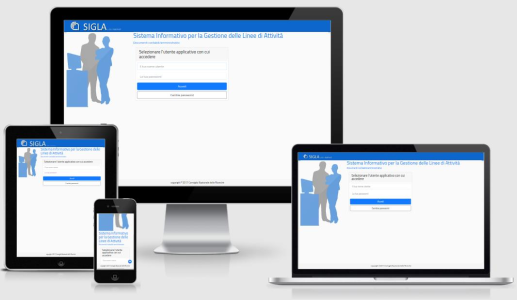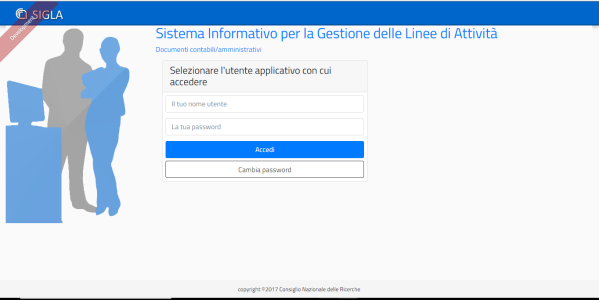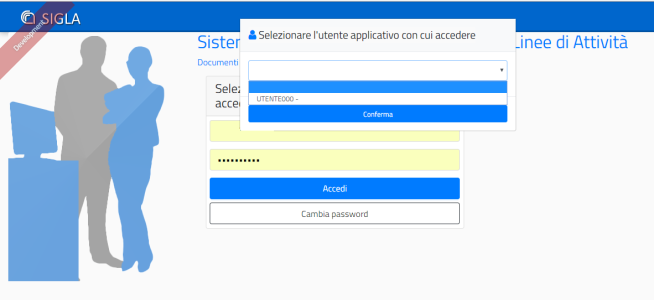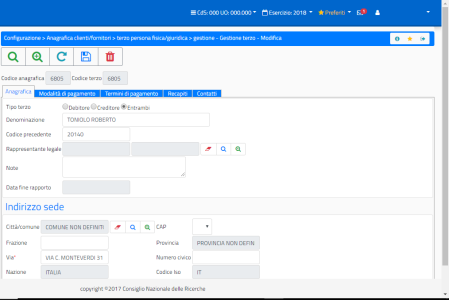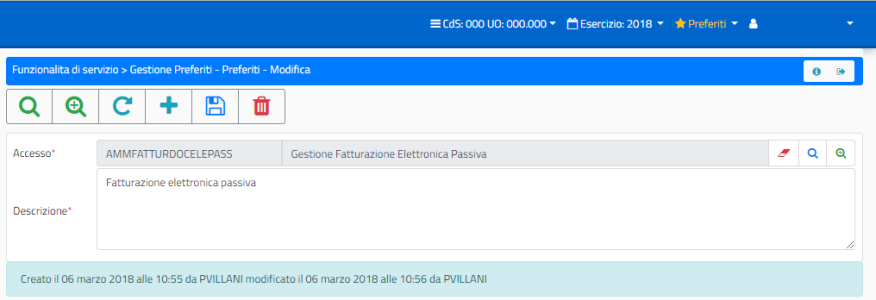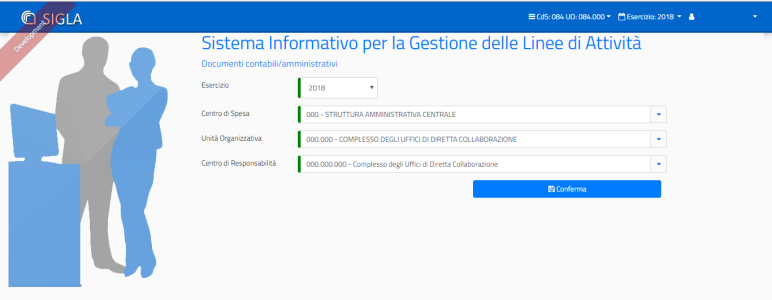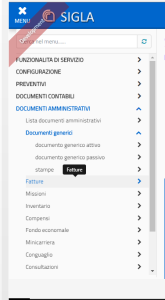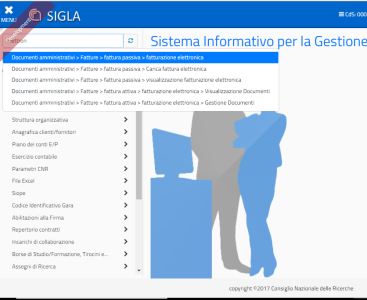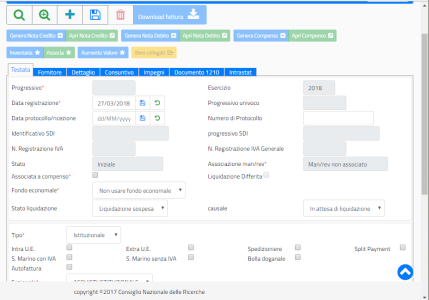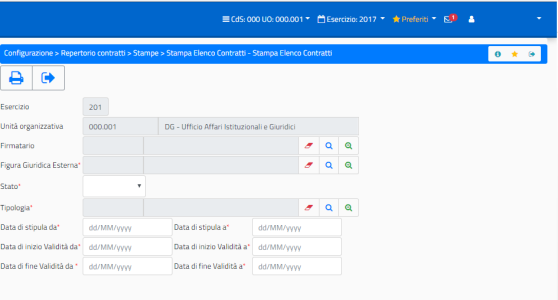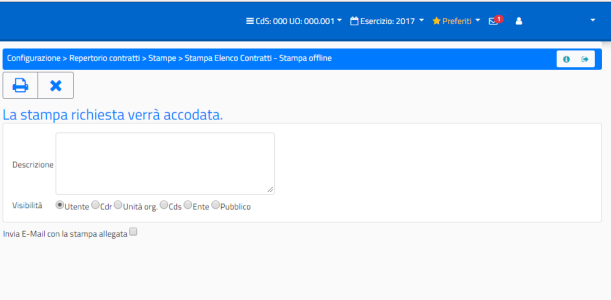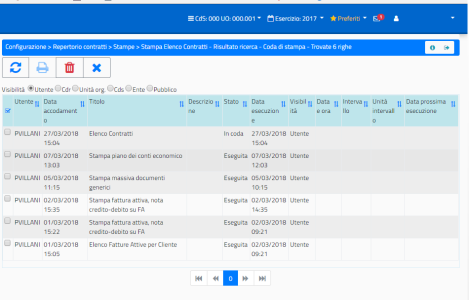
sigla
Acronym – Accounting information system for public bodies based on financial accounting, including economic and analytical reporting.
Description
# # * * Introduction * *
In order to provide general information on the application solution, we highlight summary information on the SIGLA Accounting System, owned by the CNR, which deals with administrative and accounting processes, forecasting, management and reporting. The system is aimed at public bodies, in particular research bodies, operating under the system of financial accounting, with an obligation to adopt, ex post or even in parallel, the accounting system based on the recording of management facts in economic, asset and analytical terms.
# # # * * Preliminary * *
Work on the design and development of the application started in 2001 when it became apparent for the CNR the need to equip itself with a new integrated system for the management of accounts, in implementation of the Regulation governing the administration and contractual activities of the CNR, approved by DPCNR No 015448 of 14/01/2000, based on the new principles of public accounting introduced by Law No 94/97 and Legislative Decree No 279/97. A significant overhaul of the application was carried out during 2004, in implementation of Legislative Decree No 127 of 04/06/2003, in order to improve resource management control and align internal accounting management with project reporting criteria (with particular reference to European and national projects). To date, the SIGLA information system is fully consistent and adaptable to the design of the budgets and the management of the activities provided for by the legislation in force in the field of public accounting. The latest developments in the system allow for the adoption of an economic balance sheet, whether derived from or in parallel with the financial accounting system, which is suitably configured according to specific needs.
# # # * * General System information * *
The * * S * * di * * I * * ntegrated for the * * G * * * ingestion of * * L * * inee * A * * ttivity is a modular application system, organised into functional components that are integrated and manageable independently of each other. * * access * * to the system, including via web, data and functionalities, shall be controlled by system administrators through the establishment of user profiles that limit the visibility and use of functions, as well as the management of certain data or the use of particular functionalities. Access to the application is also made available to the organisational structure of the body to which it has been authorised. The application solution is ‘multiple’ and consists of three levels of organisation of the body, which, in the specific case of the CNR, are:
— Expenditure Centre; — Organisational unit; — Centre of Responsibility.
* * architecture and technology * * used in development allow easy maintenance and evolution of the system. The possibility of using or implementing services to support additions, simplifies the dialogue between the application itself and other applications within the body and makes it possible to use only a few SIGLA components, replacing some of them with those already present in reality. The documentation and online help provided complement the simple usability of the application. The simple and intuitive interfaces of the application help the user navigate through the various functional processes envisaged.
* * acronym * * covers various administrative and accounting management aspects, and underpins all functional processes to control the use of resources in support of research activity, or any public activity _ * * * project * * _. The transversal element to the various functionalities is the _Project with lines of activity. Organised in this way, the system manages and controls the analytical aspect, from the forecast stage to full reporting, of the Accounting Budget.
* * the possibility * * to extract in * * Excel * * all the data on the search functions and to produce reports autonomously is very useful for users who organise their work in a simple and autonomous way. And the possibility of scheduling periodic reports and sending them automatically to one’s email address or to that of other staff.
* * financial accounting * * is the accounting system based on civil law, to which public research bodies are now also liable, which, following the agreements drawn up with their supervisory bodies, will gradually adapt and abandon the financial accounts adopted so far.
The configuration possibilities offered by SIGLA are:
— Use of the financial accounts as official accounts and derived from the balance sheet at the end of the year by means of a specific automatic procedure; — Use of the financial accounts as official accounts and proposal for the respective economic asset records in the same way as the consolidation of financial entries; — Double-entry entries, in the parallel * * * version * *, may be made available on display only or may be modified in such a way that they can periodically manage financial statements drawn up and aligned with the actual accounts of the institution, in accordance with both financial rules and economic assets; — The latest planned configuration is in the process of being implemented: the use of an accounting system based exclusively on the Economic Capital Accounts without any financial derivation.
# # * * Components – SIGLA functions * *
The functional components of the system cover accounting and administrative and accounting aspects which automatically provide accounting results. The topics can be grouped as follows and clearly consist of detailed management and functionalities:
— * * management of utilities and system configuration aspects * *
— Management of Profili and Abilitations
Definition of the body’s organisational structure
— System setup
— * * management of Key Records * *
— Projects and GAE (management of elementary actions)
— Third party registration
— Financial and Economic Accounts Plan
— Basic register
— * * management of Economic and Financial Programming * *
— Estimated budget for decision making/Management
— Changes and budgetary transfers
— Financial balance sheet
— * * accounting management * *
— Commitments and Findings
— Mandates, reversals and interfaces
— Administrative documents
— VAT management
— * * outturn management * *
— Management of analytical reporting
— Economic balance sheet
— Year-end operations.
— * * management of Missions * *
— * * management of cooperation calls * *
— * * Inventory management * *
— * * financial accounting * *
— Use of the financial accounts as official accounts and derived from the balance sheet at the end of the year by means of a specific automatic procedure;
— Use of the financial accounts as official accounts and proposal for the respective economic asset records in the same way as the consolidation of financial entries;
— Double-entry entries, in the parallel * * * version * *, may be made available on display only or may be modified in such a way that they can periodically manage financial statements drawn up and aligned with the actual accounts of the institution, in accordance with both financial rules and economic assets;
— The latest planned configuration is in the process of being implemented: the use of an accounting system based exclusively on the Economic Capital Accounts without any financial derivation.
Features
- Management of Profili and Abilitations
- Definition of the body’s organisational structure
- Projects and GAE (management of elementary actions)
- Third party registration
- Estimated budget for decision making/management
- Changes and budget transfers
- Commitments and Findings
- Reversal mandates and Cassiere interface
- Administrative documents
- VAT management
- Management of analytical reporting
- Economic balance sheet
- Year-end operations
- Management of Missions
- Management of Collaborative Loans
- Management of Inventory
- Financial Accounting and Capital Accounts

